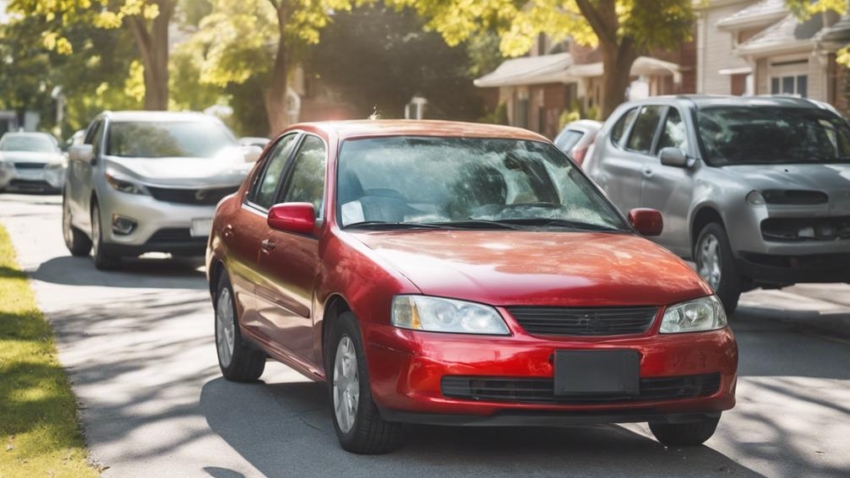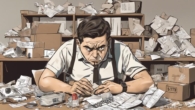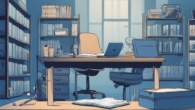
Steps to Take When You're Involved in a Minor Car Accident
When involved in a minor car accident, they take immediate action to guarantee a smooth resolution. First, they move to a safe location to avoid further risk. Next, they check for injuries and damage, and call the police or authorities to report the incident. They gather information and evidence, including exchanging details with parties involved and documenting the accident scene. After that, they notify their insurance provider and seek medical attention if necessary, keeping a record of events along the way. By following these steps, they set themselves up for a successful outcome – and there's more to know to make sure they're fully protected.
Move to a Safe Location
If possible, immediately move your vehicle to a well-lit, flat, and straight section of the road or a nearby parking lot to avoid obstructing traffic and reduce the risk of further accidents. This simple step can greatly minimize the likelihood of another collision or a roadside emergency. In the chaos following a minor car accident, it's important to prioritize safety above all else. By relocating to a secure area, drivers can reduce their anxiety and focus on the next steps to take.
In a roadside emergency, every minute counts. Staying calm and composed is essential in managing driver anxiety. By moving to a safe location, drivers can create a buffer zone between themselves and the flow of traffic, reducing the risk of further incidents. Additionally, this strategic move enables drivers to assess the situation more effectively, take stock of the damage, and plan their next course of action.
Check for Injuries and Damage
After moving to a safe location, it's essential to check for injuries and damage. She should quickly assess if anyone involved in the accident has been hurt, no matter how minor the injury may seem. Next, she should examine the vehicle damage to determine the extent of the damage.
Assess Injuries and Harm
The first priority in the aftermath of a minor car accident is to check for injuries to all parties involved, as well as assess the damage to the vehicles. It's essential to prioritize the well-being of everyone involved, including passengers, pedestrians, and other drivers. Injuries can range from mild to severe, and some may not be immediately apparent.
| Injury | Symptoms | Action |
|---|---|---|
| Whiplash | Neck pain, stiffness, limited range of motion | Seek medical attention, consider pain management options |
| Cuts and Lacerations | Bleeding, redness, swelling | Apply pressure, clean and dress wounds |
| Concussion | Dizziness, headache, confusion | Seek medical attention, monitor for severe symptoms |
| Sprains and Strains | Pain, swelling, limited mobility | Apply ice, elevate affected area, seek medical attention if severe |
| Shock | Pale or cool skin, fast heart rate, confusion | Stay calm, call emergency services if severe |
Assessing injuries and harm is vital in determining the necessary course of action. It's important to prioritize medical attention for severe injuries and provide basic first aid for minor injuries. Remember to prioritize pain management and monitor for whiplash symptoms, as they can take time to manifest.
Examine Vehicle Damage
While tending to the well-being of everyone involved, it's also important to assess the extent of damage to the vehicles, as this will impact the next steps in the process. A thorough examination of the vehicle damage will help determine the severity of the accident and the necessary repairs. Start by conducting a mechanical inspection to identify any potential issues with the engine, transmission, or other critical systems. Check for any signs of damage to the vehicle's frame, suspension, or steering system. Additionally, perform a paintwork assessment to evaluate the extent of cosmetic damage, including scratches, dents, or broken glass. Take note of any damage to lights, mirrors, or other exterior components. It's vital to document the damage with photos and videos to support any insurance claims or repair estimates. By carefully examining the vehicle damage, individuals involved in a minor car accident can make sure they're adequately prepared for the next steps in the process, including filing claims and scheduling repairs.
Call the Police or Authorities
Following a minor car accident, it's important to notify the authorities promptly to guarantee a proper investigation and documentation of the incident. This step is essential, even if the accident seems minor, as it helps establish a formal record of what happened. When calling the police or authorities, it's essential to provide as much detail as possible, including the location, time, and a brief description of what occurred.
The police will respond according to their protocol, which may involve dispatching officers to the scene or providing guidance over the phone. It's crucial to follow their instructions and cooperate fully with their authority response. In some cases, the police may not respond in person, especially if the accident is minor and there are no injuries. However, it's still important to file a report, which can be done at the police station or online, depending on the jurisdiction's procedures.
Remember that the police report will serve as an official record of the accident, which can be useful when dealing with insurance companies or resolving any disputes that may arise. By calling the authorities promptly, you can ensure that the incident is properly documented, and you'll have a solid foundation for any subsequent steps, such as filing a claim or seeking repairs.
Gather Information and Evidence
After notifying the authorities, drivers involved in a minor car accident should take a moment to gather information and evidence at the scene, as this data will be essential in resolving any disputes or claims that may arise. This step is important in building a strong case, should a dispute or claim arise.
When gathering information, drivers should take photographic proof of the accident scene, including damage to all vehicles involved, skid marks, and any visible injuries. It's essential to capture images from multiple angles to provide a detailed view of the accident. Additionally, drivers should make a note of the exact location, time, and date of the accident, as well as the weather and road conditions at the time of the incident.
Another critical aspect of gathering information is collecting witness statements. If there were any witnesses to the accident, drivers should try to obtain their contact information and a brief statement of what they saw. Witness statements can provide an unbiased account of the accident, which can be invaluable in resolving disputes. Drivers should also make a note of the license plate numbers, makes, and models of any vehicles involved. By gathering this information and evidence, drivers can make sure they have a solid foundation for any potential claims or disputes that may arise.
Exchange Details With Parties
When exchanging details with parties involved in the minor car accident, it's crucial to gather accurate information. This includes identifying all parties involved, including drivers, passengers, and witnesses, and collecting their names, phone numbers, and insurance information. By doing so, individuals can guarantee they have the necessary details to file a claim or resolve any potential disputes.
Gather Information
The parties involved in the accident should exchange important information, including names, phone numbers, and insurance details, to facilitate a smooth claims process. This information will be essential in filing insurance claims and resolving any disputes that may arise. It's necessary to gather accurate and detailed information from all parties involved, including drivers, passengers, and witnesses.
In addition to exchanging contact and insurance information, it's imperative to gather statements from drivers and witnesses. A driver's testimony can provide valuable insight into the events leading up to the accident, while witness statements can corroborate or contradict the drivers' accounts. Take detailed notes and document everything, including the time, date, and location of the accident. Photographs of the accident scene, damage to vehicles, and any visible injuries can also serve as critical evidence. Remember to also gather information from any witnesses, including their contact information and a brief statement of what they saw. This information will be crucial in reconstructing the accident and determining fault.
Identify Involved Parties
By exchanging information with all parties involved, drivers can create a thorough list of individuals to contact in the aftermath of the accident. This step is important in making sure that all parties are accounted for and that everyone's interests are protected. Drivers should obtain the following information from all parties involved: names, phone numbers, addresses, insurance information, and vehicle details. Additionally, drivers should collect passenger statements, which can provide valuable insights into the accident. Passenger statements can be particularly helpful in reconstructing the events leading up to the accident. Moreover, drivers should create detailed driver profiles, including their license numbers, vehicle registration, and insurance policy numbers. This information will be essential when filing claims or dealing with insurance companies. By gathering this information, drivers can ensure that they have a detailed record of the accident, which can facilitate the claims process and protect their interests.
Document the Accident Scene
She takes photos of the accident scene from multiple angles, capturing damage to all vehicles and any visible injuries. This photographic evidence will be essential in documenting the extent of the damage and can help support her insurance claim. She makes sure to take close-up shots of the license plates, as well as the surrounding area, including any road signs or traffic signals.
Next, she gathers witness statements from anyone who may have seen the accident. She approaches potential witnesses and asks if they're willing to provide a brief statement about what they saw. She takes notes on their account, including their name, contact information, and a summary of their statement. Having witness statements can help corroborate her version of events and provide additional credibility to her claim.
In addition to photographic evidence and witness statements, she also documents any other relevant details about the accident scene. She notes the time and date of the accident, the weather conditions, and the road conditions. She also makes a sketch of the accident scene, including the position of the vehicles and any notable landmarks.
Notify Your Insurance Provider
Within 24 hours of the accident, it's important to notify her insurance provider about the incident. This notification is vital in making sure that her insurance provider is aware of the situation and can guide her through the next steps. Failing to notify her insurance provider in a timely manner may lead to delayed or denied claims.
When notifying her insurance provider, she should have the following information ready:
| Information | Description | Importance |
|---|---|---|
| Policy Number | Unique identifier for her insurance policy | High |
| Accident Details | Date, time, location, and description of the accident | High |
| Vehicle Information | Make, model, and VIN of the vehicle involved | Medium |
| Witness Statements | Names and contact information of witnesses | Medium |
| Police Report | Copy of the police report, if filed | Low |
Her insurance provider will guide her through the claims process, explaining the insurance requirements and policy coverage. It's important to understand the policy coverage to know what is covered and what is not. By notifying her insurance provider promptly, she can ensure a smooth claims process and avoid any potential delays or complications.
Seek Medical Attention If Necessary
Even if the accident seems minor, it's crucial to seek medical attention immediately if anyone involved is experiencing pain, discomfort, or showing signs of injury. It's essential to prioritize medical priorities, as some injuries may not be immediately apparent. Hidden injuries, such as whiplash or concussions, can have long-term consequences if left untreated.
If anyone is injured, call emergency services or have someone drive them to the nearest hospital. Don't try to diagnose or treat injuries yourself, as this can lead to further harm. Instead, let medical professionals assess and treat injuries accordingly.
Some signs that medical attention is necessary include:
- Severe pain or discomfort
- Visible injuries, such as cuts or broken bones
- Difficulty moving or walking
- Confusion, dizziness, or loss of consciousness
Keep a Record of Events
After the accident, everyone involved should write down as many details as possible about the incident, including the date, time, location, and a description of what happened. This record will serve as a valuable reference for insurance claims, police reports, and any potential legal proceedings. It's essential to create an Event Timeline, outlining the sequence of events leading up to the accident and the moments immediately following. This timeline should include details such as the direction of travel, road conditions, and any contributing factors like weather or roadwork.
Additionally, gather Witness Statements from anyone who saw the accident, including passengers, pedestrians, or other drivers. These statements can provide critical objective accounts of the incident, helping to clarify what happened. Be sure to record the witnesses' names, contact information, and a brief summary of what they saw. This information can be invaluable in supporting your version of events.
Frequently Asked Questions
Can I File a Claim if the Accident Was Partially My Fault?
She can file a claim even if the accident was partially her fault. In many jurisdictions, fault allocation rules apply, where the degree of fault is assessed and damages are allocated accordingly. This is known as comparative negligence. If she's found to be 20% at fault, for instance, her claim will be reduced by 20%. It's essential to consult with an attorney to navigate the complexities of fault allocation and maximize her claim.
What if the Other Driver Doesn't Have Car Insurance?
If the other driver doesn't have car insurance, they're considered an uninsured motorist. This can lead to a significant financial burden for the injured party, as they may be left to cover medical expenses and repairs themselves. Additionally, the uninsured driver may face legal consequences, including fines and even license suspension. It's essential to know your state's laws and options for seeking compensation in such situations.
Do I Need to Call the Police for a Minor Accident?
She needs to understand that calling the police isn't always necessary for minor accidents. However, it's important to know her state's Police Protocol for Accident Reporting. If the damage is minor and everyone's safe, she might not need to call the authorities. But if there are injuries, fatalities, or significant damage, calling the police is a must. It's essential to familiarize herself with local laws to guarantee compliance and avoid potential legal issues.
Can I Settle With the Other Driver Without Insurance Companies?
She weighs the pros and cons of settling with the other driver directly, sans insurance companies. In theory, a private agreement seems appealing, allowing both parties to move on swiftly. However, she must consider the potential pitfalls. A vital aspect of such agreements, a mutual release, can be tricky to navigate. Without proper legal guidance, she may inadvertently relinquish her right to future claims.
Will My Insurance Rates Increase After a Minor Accident?
She wonders if her insurance rates will skyrocket after a minor fender bender. Typically, a single minor accident won't trigger significant rate hikes, but it depends on her insurance provider and state regulations. If she's at fault, her insurance premium might increase, but not drastically. However, multiple claims or accidents within a short span can lead to substantial rate hikes. It's crucial to review her policy and shop around to make sure she's getting the best rates.











